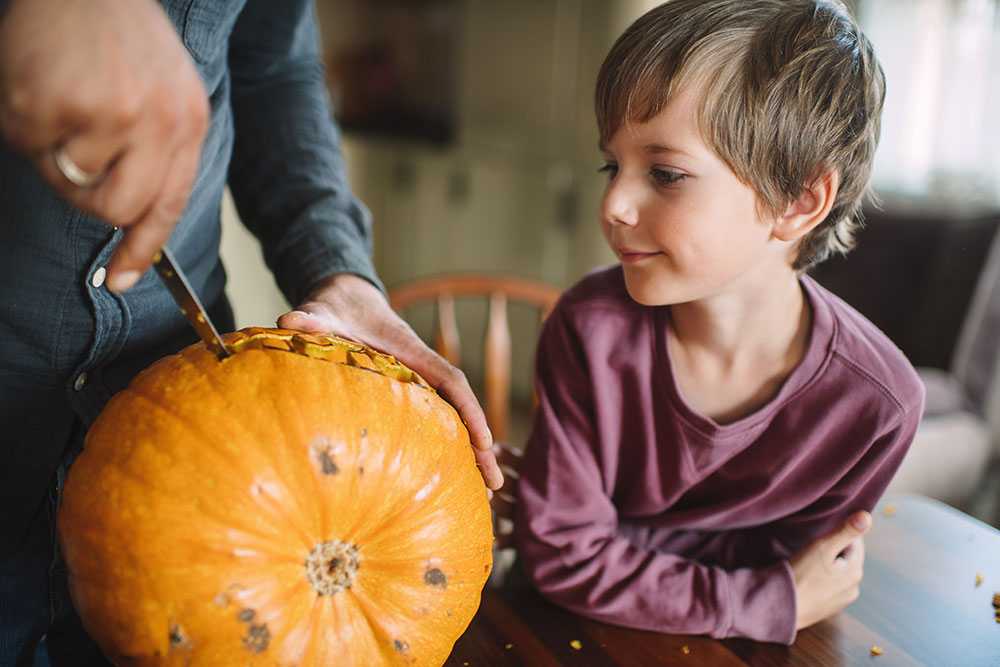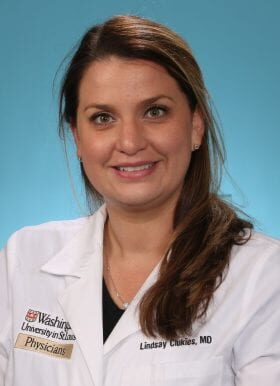
October 2, 2024, 12:49 p.m.
Lindsay Clukies, MD
As a pediatric emergency medicine physician, I've seen firsthand how Halloween fun can quickly turn into a trip to the emergency department. While the holiday is meant for excitement and celebration, injuries can certainly happen. Here are some common issues and tips to prevent them:
The hazard: If not chosen carefully, Halloween costumes can lead to injuries. Loose or overly long costumes are tripping hazards that increase the risk of falls. Small costume parts and accessories can pose choking risks, especially for younger children. Masks that obstruct vision can result in eye injuries or accidents.
How you can prevent it: Select costumes that fit well and are not too long or baggy. Avoid costumes with small, detachable parts, and consider using face paint or makeup instead of masks (but see below for my tip on preventing allergic reactions).
The hazard: Candy, like all food, can pose risks like choking and unintentional poisoning. While it's not common to receive tainted candy on Halloween, it could happen.
How you can prevent it: Keep an eye on what your child has in their mouth while trick-or-treating. If you can, wait until you’re home to sort and check treats. Inspecting treats for any signs of tampering or spoilage is important. I recommend that a responsible adult examines all treats and throws away unwrapped or suspicious items. All candy should be in its original, unopened packaging. Be aware that non-food items like glow sticks might look like candy and can be swallowed accidentally. To avoid these dangers, keep non-food items out of reach.
Remember, you should call the National Poison Control Center at 1-800-222-1222 if your child ingests something they shouldn't.
The hazard: Face paint and makeup can sometimes lead to allergic reactions or skin irritations. Allergic reactions can range from mild rashes to more severe symptoms such as swelling, itching or difficulty breathing.
How you can prevent it: Opt for hypoallergenic and nontoxic products to help minimize the risk of any reaction and test the paint and makeup on a small area of your child's skin before you apply it to their face.
The hazard: Increased pedestrian traffic during trick-or-treating heightens the risk of accidents while running or playing in the dark.
How you can prevent it: When possible, choose costumes that are light-colored and more visible to motorists. Another option is to apply reflective tape or stickers to the costume to increase visibility. If possible, choose face paint or makeup instead of masks, which can obstruct a child's view. It's also a good time to discuss the basics of street safety with children. Remind them to always stay on the sidewalks, only cross streets at crosswalks and always make eye contact with drivers before crossing streets. Finally, both pedestrians and drivers should put the electronics down.
The hazard: Pumpkin carving is the leading cause of injuries associated with Halloween. Every season, we see injuries to kids' hands — sometimes they're so severe they require surgery.
How you can prevent it: Leave the carving to adults. Children, especially younger children, should never carve a pumpkin. Allow children to paint pumpkins and enjoy stencils, stickers and other crafts. My children love to scoop out the seeds, so having a great time is possible without letting your young children do the carving.
For those with older children who do carve, make sure your tools and your pumpkin are dry. Any moisture can lead to slipping, causing injury. Always carve your pumpkin on a flat surface in a well-lit area. Finally, know that sharper doesn't mean better. Very sharp knives often become stuck in the pumpkin, requiring force to remove them, and sometimes leading to injury. Use smaller, serrated pumpkin-carving knives because they are less likely to get stuck and easier to remove if they become lodged in a pumpkin.
To keep Halloween safe and fun, take these steps to prevent common injuries. Knowing basic first aid and CPR can make a big difference if injuries occur. You should also have a well-stocked first aid kit. By staying prepared and aware of potential risks, you can enjoy a worry-free Halloween with your family.
In case of a medical emergency with a child, determine where the nearest accredited, Level I pediatric trauma center is located. St. Louis Children's Hospital has six pediatric emergency department locations across the St. Louis and southern Illinois region. These include St. Louis Children’s Hospital, Children’s Hospital at Memorial Hospital Belleville, Children’s Hospital at Memorial Hospital Shiloh, Children’s Hospital at Missouri Baptist Medical Center, Children’s Hospital at Northwest HealthCare and Children’s Hospital at Progress West Hospital.
 Lindsay Clukies, MD, is a Washington University emergency medicine physician and associate medical director for trauma services at St. Louis Children's Hospital.
Lindsay Clukies, MD, is a Washington University emergency medicine physician and associate medical director for trauma services at St. Louis Children's Hospital.










